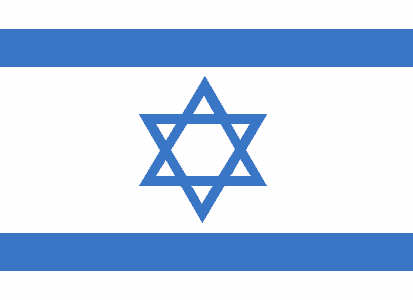- HubPages»
- Education and Science»
- History & Archaeology»
- History of the Modern Era
The Promised Land: A History Of Modern Israel
A Modern Symbol Of Judaism

The Founder Of Zionism

Background
In the 1880's many Jews began to immigrate to Palestine to avoid increasing religious persecution in Europe, and in 1897, Zionism became an official, and organised political movement. Its founder, Theodor Herzl, convening the First Zionist Congress, which above all things called for a Jewish state in what was then Ottoman controlled Palestine.
During the course of World War I, the Ottoman Empire collapsed, and thus it was left to the victorious Allies to decide the fate of the former Empire's Middle Eastern territories. In 1916, France and Britain signed the Sykes-Picot Agreement, which, essentially divided the former Ottoman territories between them into Mandates (an Ottoman or German territory that was handed to another country to run after World War I.) France gained the Mandates of Syria and Lebanon, while Britain was granted the Mandate for Iraq and Palestine.
A year later, the British government drew up the Balfour Declaration, that accepted the need for a Jewish homeland in Palestine.
British Rule
British rule officially began in Palestine in 1919 when the British Mandate was granted. And almost immediately, it was marked by controversy and violence. The majority Arab population strongly contested the Jewish settlers' claim on their country, and some Arabs resorted to aggressive attacks against Jews, their homes, and their businesses. The Jews, feeling that the British authorities were giving them insufficient protection, began to form local defence groups, known collectively as the Hagannah, to protect their communities. During the 1930s the Hagannah turned into a paramilitary organisation, developing military training programmes and sourcing arms from Europe.
UN Partition Plan

Jewish Refugees

British Withdrawal And Israeli Independence
Guerrilla violence between Arab groups and the Hagannah became increasingly difficult for the British to police, so in 1939 they called together Arab and Jewish delegations to the St. James Conference, also known as the Round Table Conference, to find a solution for the ongoing tensions. No agreement was reached at the conference, so the British formed their own policy, which was stated in the McDonald White Paper of 1939. In it the British made concessions to the Arabs on a wide range of issues, the most important of which was a restriction on the free settlement in Palestine of Jewish refugees. This seemed like a death sentence for those Jews trying to flee Nazi Europe to Palestine. Supporters of the Arab and Jewish sides held international conferences during 1946, but the year ended without any workable solutions to the problem. Caught between Arab and Jewish demands, a cash strapped British government declared its mandate in Palestine 'unworkable' in February 1947 and referred the matter to the United Nations. The UN proposed a partition plan, which allocated about 44 per cent of the area for an Arab state and 56 per cent for a Jewish state, with Jerusalem under international administration. On the 29th November 1947 the UN General Assembly voted 33 to 13, with 10 abstentions, in favour of the Partition Plan. The Jews agreed with their decision but the Arabs did not, arguing that the plan ignored the rights of the majority of people living in Palestine.
Despite this, Britain withdrew and on the 14th May 1948, David Ben-Guiron, the first Prime Minister of Israel, proclaimed the establishment of the State of Israel. The next day, troops from the armies of Egypt, Transjordan (to be renamed Jordan in 1949), Syria, Lebanon, and Iraq attacked. The Arabs claimed that they were seeking to establish a unified, religiously neutral state of Palestine in accordance with the wishes of the non-Jewish majority of the population; Jews took note of anti-Semitic statements by some Arab leaders.
Although they were initially probably better equipped, the Arab forces had no common strategy or command. The Israelis, meanwhile, felt they were fighting for their lives and had a strong and unified command. The Hagannah was well trained and disciplined and had bought armies from Europe, as well as receiving enough aid to equip itself with artillery, ammunition, and a small navy and air force. By the end of the war, the Israeli forces also greatly outnumbered those of their Arab opponents.
Two weeks of bitter fighting saw the Israelis halt the Arab offensives and gain ground. In further periods of fighting, interspersed with truces, the newly established Israeli Defence Force enlarged Israel's land corridor east to Jerusalem and captured new territory in Galilee in the north and the Negev in the south. The war ended in January 1949 with Israel occupying all of the old British Mandate of Palestine except the Gaza Strip, taken over by Egypt, and the West Bank, taken over by Jordan. Israel now held a substantially larger area than in the 1947 UN Partition Plan.
The approach to war and the war itself were marked by atrocities on both sides. Many Palestinians were forced from their homes during the conflict, mostly settling as refugees in Gaza and the West Bank. In subsequent years a similarly large number of Jews migrated willingly and unwillingly to Israel from their homes in Arab countries. All these events have left a legacy of bitterness that persists to this day.
Jerusalem Conflict

The Story Of The Suez Crisis
The Suez Crisis
Following the 1948-49 war, border clashes and terrorist and counter terrorist operations continued. The new Egyptian government under President Gamal Abdel Nasser was also seeking to end the long standing Anglo-French involvement in his country. In 1955, Egypt closed the Gulf of Aqaba, thereby blockading Eilat, Israel's only outlet to the Red Sea. The subsequent Egyptian nationalisation, in 1956, of the Suez Canal- owned mainly by the British government and French investors- provoked Britain and France to collude secretly with Israel. The plan was for Israel to invade Sinai, supposedly to forestall an Egyptian attack, giving Britain and France the pretext to seize the canal, while keeping the warring Israelis and Egyptians apart.
Israel duly attacked Egypt on the 29th October and, following Nasser's refusal to accept a ceasefire, British and French forces attacked Egyptian bases. Then, on the 5th November, they occupied Port Said at the entrance of the canal. Widespread condemnation of the attack from the United States and other nations, and a collapse of the value of the British Pound, forced both the French and the British governments to suspend operations on the 7th November.
This squalid event marked the end of any major British or French imperial role in the region. Israeli forces were successful in lifting the blockade of Eilat and reducing attacks from Gaza. UN peacekeepers then arrived in the region to keep the peace.
Mirage Fighter

The Six Day War
The Suez Crisis of 1956 transformed the Egyptian President into an Arab hero for successfully standing up to British and French forces. Nasser bolstered his armed forces with Soviet arms, while Israel bought state of the art aircraft from France and tanks from Britain and the United States. Through the mid 1960s Israel and Syria also clashed especially fiercely along their border. Claiming that Israel was preparing an invasion of Syria, Nasser forced the UN Sinai peacekeepers to withdraw in May 1967 and, along with Jordan, Iraq, and Syria, massed troops along Israel's borders. Once again, Israel struck first.
On the 5th June 1967, the Israeli Air Force launched a series of devastating raids against its enemies, virtually destroying the Egyptian, Syrian, and Jordanian Air Forces. Israeli troops invaded Sinai and reached the Suez Canal on the 8th June. Its troops also occupied the entire West Bank, gaining control of the whole of Jerusalem for the first time, and seized the Golan Heights from Syria, advancing 30 miles towards Damascus, the Syrian capital. When the fighting stopped on the 10th June. Israel had doubled the size of its territory, gained new defensible borders along the Suez Canal, the Jordan River, and the Golan Heights, and had removed the threat of enemy guns bombarding its cities.
The Story Of Yom Kippur
Yom Kippur
The Six Day War brought Israel military success but no better security, as none of the neighbouring states would trade peace in return for lost territory. Egypt, in particular, was humiliated by the outcome of the war and its loss of Sinai, and waged a three year campaign of raids and artillery fire across the Suez Canal. On the 6th October 1973, its new leader, Anwar Sadat, planned a surprise attack against Israel in alliance with Syria to coincide with the Jewish holy day of Yom Kippur. Egyptian troops crossed the canal and headed into Sinai, supported by surface to air missile batteries and portable anti tank missiles that limited the traditional Israeli strengths of air and tank power. More than 100 Israeli planes were shot down by the Soviet supplied missile launchers in the first days of the war.
By the 9th October, the Egyptians had overstretched their lines of supply and outreached their defensive air cover and so ground to a halt. Supplied with new US equipment, the Israelis went on the offensive one the 16th October. The Israelis broke through two Egyptian armies and crossed to the west bank of the Suez Canal, encircling the Egyptian Third Army on the east bank.
To the north, Israel fought off a Syrian offensive against the Golan Heights and destroyed around 900 Syrian tanks in a massive battle. Its forces then advanced to within 25 miles of Damascus.
A UN ceasefire on the 24th October ended the Yom Kippur War, the fourth and, to date, final attempt by the Arab states to invade and overthrow Israel.
Preparing For Invasion

History Of Intifada
The Oslo Accords

Ongoing Troubles
The peace deal between Israel and Egypt should have brought an end to conflict in the region, but it continued almost unabated. Israel had managed to hold onto much of the land they had captured, while beleaguered Palestinians fought hard to create a nation of their own.
In 1977, President Anwar Sadat of Egypt visited Jerusalem, marking the first recognition of Israel by an Arab Head of State. Talks led to a peace agreement, signed in Washington DC, in 1979. Three years later, Israel agreed to hand back the Sinai, but not the Gaza Strip.
Meanwhile exiled Palestinians set up the Palestine Liberation Organisation (PLO) in Jordan in the 1960s to being together Palestinian political parties. In 1970 the PLO moved its headquarters to Beirut, in Lebanon, which was home to more than 300,000 Palestinian refugees. The PLO used the country as a base from which to fire rockets at northern Israel. In retaliation, Israel invaded Lebanon in June 1982. Israeli tanks attacked targets in the Palestinian stronghold of West Beirut, while Christian militias allied to the Israelis attacked the Sabra and Chatila refugee camps, killing 800 people. International outrage forced Israel to withdraw from the city, leaving a residual force in the buffer zone that eventually withdrew in 2000.
From the 1980s Israel established Jewish settlements in the West Bank, and extended its control of Jerusalem. Palestinians living in Israeli-occupied territories launched its first uprising or 'Intifada', against Israeli rule in 1987. In 1993, with the help of US President Bill Clinton, Israel and the PLO recognised each other in the Oslo Accords and began moves towards Palestinian self rule in Gaza and the West Bank. However, political changes on both sides, continuing terrorist and military clashes meant that progress was painfully slow. A renewed intifada that began in 2000 saw tensions rise again. Israeli attacks on Lebanon in 2006 and Gaza from 2008 onwards, has resulted in condemnation from around the world, although Israel cites continuing Palestinian terrorism as its justification for its aggression.
What Do You Think?
Will the troubles between Israel and the Arab world ever be resolved?
© 2014 James Kenny








